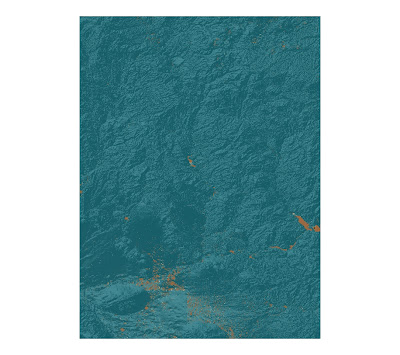The aim of this lab is to map and analyze the Station Fire- which is the largest and deadliest wild fire in Los Angeles County in 2009, using GIS data from Governmental agencies. First, I will attempt to map the Station Fire progression from August 29 2009 to September 2 2009 using ArcGIS. Secondly, I will make a series of thematic map that highlight high fire risk neighborhoods in LA County that may be used to inform people who currently live in or plan to live in these areas.

The above map is the Station Fire Temporal Progression map which shows the outlines of the perimeters of the Station Fire over time using data from http://atlas.ca.gov/. The extent map shows where the Station Fire occurred in the context of the State of California. From the progression of the fire perimeter above, I can see a pattern that shows the fire is not spreading out evenly in all directions, but tend to spread to the West and South-West directions predominantly.
I hypothesize that the dry Santa Ana winds that come through Los Angeles in the Fall that blow west offshore into the coast has something to do with the way the Station Fire spreads. According to the Department of Atmospheric Science at UCLA, "Southern California's Santa Anas are dry, north-easterly winds having speeds in excess of 25 knots (46 kilometers/hour) These offshore winds usually occur in late fall and winter when a high pressure system forms in the Great Basin between the Sierra Nevadas and the Rocky Mountains." This information matches the dates of the Station Fire- which also occurred in late fall and early winter, as well as the direction of the fire. Therefore, I have mapped above, high fire risk neighborhoods that lie on the West and South-Western directions of the Station Fire using data on population centers overlaid on the perimeter of the Station Fire. I also overlaid hydrological features onto the map, which shows that the largest water sources lie in the North West and South East, which increase the risk of fire in the South West.
The map above maps the wild fires of 2008 and 2009 in Los Angeles using data from the USDA Forest Service, and along with vegetation cover and population centers. High risk neighborhoods in this map are extension of the hypothesis that the Santa Ana winds are important factors in determining the spread of wild fires, thus neighborhoods that lie in the South West of fire prone areas are marked black. The graph shows the different types and quantity of land cover of Los Angeles County- the land cover that covers the largest non-urban area is the Hardwood Forest and Shrub. According to California Green Solutions, "the Chaparral ecosystem of Los Angeles has highly flammable shrubs" that fuel wild fires. Therefore, identifying the areas with highly flammable vegetation can help identify high fire risk areas as well.
The above map is again another extension of the previous maps but over a larger temporal scale. This time, wild fire data from four different years are mapped together with population centers to show the trend of where fires tend to originate and spread. This map clearly shows that there is a horizontal belt of fire prone areas with three main clusters. Again, all of the fires exhibit the tendency to spread to the West, thus explaining their horizontal elongated shapes and matching my Santa Ana winds hypothesis.
I believe that the information from these thematic maps of fire prone areas can help inform people about the risks of moving to such areas. Such that even if they do chose to lie there, they can mitigate the damage by building their homes with fire resistant materials. The government can also through regulation and zoning, mandate fire resistant materials to be used in buildings homes in such areas to mitigate fire risk. Along with the ideas above, insurance companies can also price their fire insurance premiums higher in these fire prone areas, and if homes are built with certain fire resistant materials, then the premium can be adjusted downwards. These solution can help mitigate human deaths in fire prone areas by increasing the costs of living in these areas, and the deaths of the two firemen such as in the case of the 2009 Station Fire may be prevented in the future.










